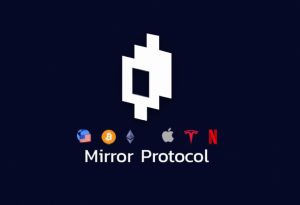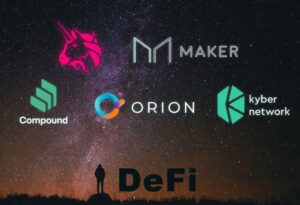
Table of Contents
ToggleWhat is a Dapp and what is it for?
Today the world of applications (or Apps) is very present in our life so that if you ask the most clumsy in technology what Whatsapp, Instagram, Twitter or Glovo are, he would be able to answer that they are Apps.
An app is a computer application designed to run on smartphones, tablets and Pcs and allow you to perform tasks of any kind (send emails, write in a chat, make video calls, play a video game etc.).
Maybe you never thought about it, but Apps have a common problem: they are centralized. This means that if one day the owners of Whatsapp wanted to put a subscription price to use the famous messaging app, this could only be used by paying.

When we talk about centralized Apps, we refer to applications that depend on a central entity that has the power to decide anything, without the need to consider its users.
This premise makes sense when it comes to understanding what is a Dapp, how is it different from apps and what is it for.
If you’re curious, skip to the next paragraph.
What is a Dapp: definition
A DApp (spelled with this strange D and pronounced as Di-app) is a decentralized application, ie an app that does not depend on a central agency, but depends on the same community of users that uses it and allows direct interaction between users and suppliers.
A DApp is basically a open source application running on a decentralised network from peer to peer, of which no entity has complete control and the information is continuously shared among the participants.
Among the main features of a Dapp are the following:
- Open Source. In closed-code applications, users must rely on application developers as they cannot directly access their data. In the DApps all changes must be decided by the consent (most) of its users.
- Consent Descentralizado. All logs of application operation are stored in a public and decentralized blockchain. In a DApp, transactions are also dealt with through a consent mechanism. When most nodes approve the transaction, it is processed.
- Incentivised. Blockchain validators are rewarded with cryptocurrency tokens.
- Protocol. The application community must agree on a cryptographic algorithm to demonstrate its value. For example, Bitcoin uses Proof of Work (Pow) and Ethereum currently uses PoS although in the future they have planned a hybrid Pow/Proof of Stake (PoS)5.
- There is no central failure point: The DApps allow to decentralize the data stored in them among all their nodes, which are independent of each other. In case of failure of a node, the other nodes will not be affected. Since the DApp are distributed and do not depend on a single server, there is no central point of failure.
TYPES OF DAPPS
Ethereum’s blockchain is the main blockchain on which developers create Dapps and its white paper defines three main categories of Dapps:
- Applications that manage money: These are DApps that generally have their own blockchain and which provide users with methods to manage their finances and money. One example is Bitcoin, which provides users with a distributed and decentralized monetization system where the users themselves own their money in these apps..
- Blockchain Semi Financial Applications: These are applications that integrate money with external events in the real world, outside the blockchain. An example in this category is the ICO (Initial Coin Offering), a fundraising mechanism similar to the IPO with the only difference that there is the participation of cryptocurrencies instead of fiat money..
- Decentralised autonomous organisations (DAOs): This third category of Dapps uses all the features of decentralized and distributed systems. They are the most popular type of Dapps and an example of these Dapps are applications for online voting or decentralized governance.
The startups Dapps, built on blockchain platforms, now constitute the majority of Icos. Most category 2 and 3 Dapps use the Ethereum platform.
Advantages of creating a Dapp
As you can imagine, there are many benefits offered by Dapps, especially if we compare them with those provided by a normal application. Among these we find:
- Resistance to censorship: One of the problems with centralized applications is that they are likely to be censored by the people who administer them. This does not happen with Dapps because being open source and decentralized, they return control to the user.
- The DApps are not susceptible to central malfunction points: As we have already mentioned before, in the Dapps the data flows among the nodes that are separated and distributed and for this reason they are more stable and easily accessible than the traditional centralized applications.
- Reliability and verifiability: since the Dapps are open source code based, this is accessible to all users, which ensures transparency and security in applications.
- Anonymity of user credentials: using a system of public and private keys, users can make transactions with different levels of anonymity and without lengthy registration procedures.
3 Successful DApps based on the Ethereum protocol
The Dapps essentially allow back-end code and data to be decentralized, and thus, to be immutable and tamper-proof. It is because of these features that Dapps have the potential to meet a wide range of use cases.
Although Ethereum is currently the preferred platform for developers of Dapps, Cardano, QTUM and NEO are also very popular for developing Dapps.
If you’re curious to know examples of Successful DApps , below we leave you some examples of DApps that we like in Bitnovo, based on the Ethereum protocol and that have already obtained millions of dollars:
Uniswap
Uniswap is an exchange, launched in May 2020, based on Ethereum that allows anyone to exchange ERC20 tokens without the need for buyers and sellers to provide liquidity, a problem that characterizes traditional markets.
Learn more about Uniswap with this complete guide.
BAT
Basic Attention Token is a transparent and decentralised digital advertising platform based on Ethereum blockchain and smart contracts.
The platform allows advertisers to purchase advertising space and user attention, using the Brave web browser.
Its objective is to:
– effectively distribute advertising money among advertisers, publishers and content readers;
– make readers see fewer ads and make them better suited to their interests;
– guarantee users’ right to data privacy.
Compound
Compound is a DApp whose objective is that users generate interest through their deposits and ask for loans on the five cryptocurrencies which are traded on it: Ether (ETH), 0x (ZRK), DAI (DAI), Basic Attention Token (BAT), and Augur (REP).
This protocol has an algorithm that calculates the interest rate that the user will earn, according to the supply and demand of each asset in each money market.
If you are interested in knowing the complete ranking of DApps, divided by category and protocol, you can take a look at the platform Dappradar.com.
In recent years the Dapps ecosystem is evolving rapidly.
As we have seen, the advantages that the Dapps provide give us hope that in the not too distant future will be launched new features and use cases unprecedented blockchain technology.








